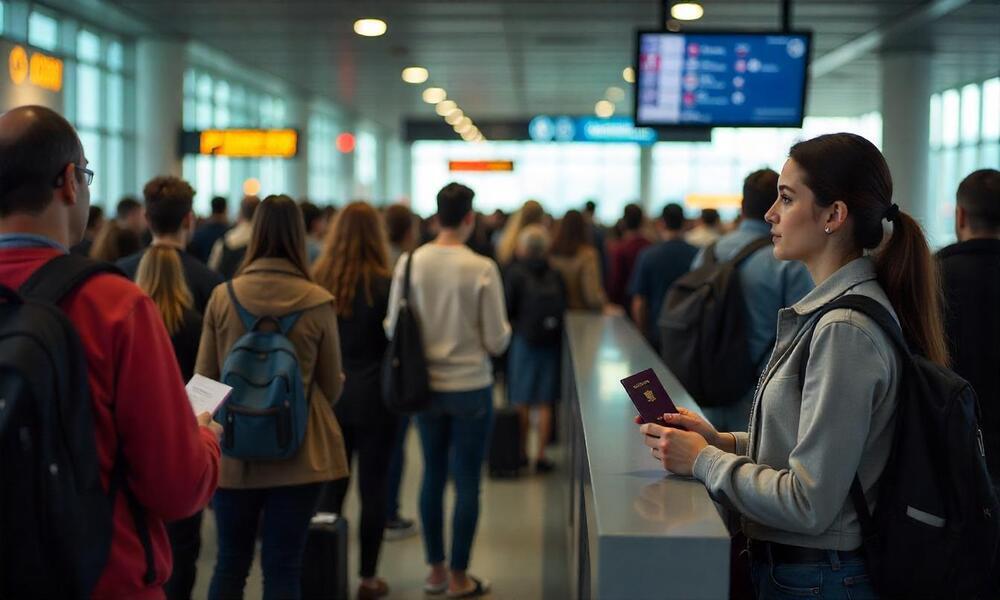Wednesday, July 16, 2025
The EU’s New Entry/Exit System Set to Launch in October: What UK Tourists Need to Know as Passport Stamps Become a Thing of the Past
Starting this October, the European Union will roll out its Entry/Exit System (EES), a digital border control initiative that will eliminate the need for manual passport stamping. This change will directly impact UK travelers visiting EU countries, introducing automated checks and biometric data collection at borders.
A sweeping transformation of EU border controls has received the green light from the European Parliament, paving the way for major changes that will affect British holidaymakers. In just three months, starting October, the new Entry/Exit System (EES) will officially take over from traditional passport stamping, introducing a fully digital process at airports across Europe.
The Entry/Exit System (EES) is a new digital platform designed to monitor non-EU travellers—such as those from the UK—whenever they enter or exit any of the 29 countries in the Schengen Zone. This covers some of the most popular European holiday destinations for UK travellers, including Italy, Greece, Spain, and France. The system will capture and store biometric data, including facial scans and fingerprints, for enhanced border security and tracking.
Instead of manual passport stamping, the Entry/Exit System (EES) will digitally log details from each traveller’s passport or travel document, including the time and location of both entry and exit within participating European countries. Travellers won’t need to complete any steps in advance, as the registration process will occur automatically at the external borders upon arrival.
Despite its technological advancements, the Entry/Exit System (EES) has prompted concerns among border control authorities, who fear it may cause increased wait times for passengers. Travel industry analysts caution that once the system is rolled out, tourists could experience significantly longer processing times at immigration checkpoints upon arrival at their European destinations.
Travellers heading to Schengen countries are being urged to allow additional time for their journeys once the Entry/Exit System (EES) goes live. Official guidance warns that passengers may encounter extended queues at border control upon arrival due to the new processing requirements.
Many travellers may also be aware of ETIAS—the European Travel Information and Authorisation System—which is a completely separate requirement from the EES. Once implemented, British nationals will need an approved ETIAS travel authorization to enter 30 European countries. Unlike the EES, which requires no prior steps before departure and registers travellers at the border, ETIAS must be applied for online before setting off. The ETIAS is electronically linked to your passport and is expected to be rolled out around six months after the EES, with both systems designed to enhance border security and streamline travel monitoring across Europe.
When applying for an ETIAS travel authorisation, individuals will need to submit a range of personal details, including their home address, passport information, current employment status, and any history of travel to conflict areas or prior criminal convictions. However, the ETIAS application does not involve collecting any biometric information like fingerprinting or facial recognition data.
What to Expect When the EES Takes Effect
Once the Entry/Exit System (EES) is implemented, travellers arriving at an external Schengen border for the first time under the new system will undergo a biometric registration process. Border officials will collect data such as facial images or fingerprint scans, which will then be stored in a secure digital record.
Travellers entering for short stays—up to 90 days within any 180-day period—will also receive written information explaining how the EES works, along with their rights regarding the handling and storage of personal data. If a traveller declines to provide the necessary biometric information, they will be refused entry into any European nation enforcing the EES system.
Which Countries Will Use the Entry/Exit System (EES)?
The new Entry/Exit System (EES) will be implemented across 29 European nations, all of which are part of the Schengen Area or associated with it. These are the same countries that will require an ETIAS travel authorization, with one exception—Cyprus, which plans to adopt ETIAS but will not participate in the EES at launch.
Here is the full lineup of nations where the Entry/Exit System (EES) will be implemented:
AustriaBelgiumBulgariaCroatiaCzech RepublicDenmarkEstoniaFinlandFranceGermanyGreeceHungaryIcelandItalyLatviaLiechtensteinLithuaniaLuxembourgMaltaNetherlandsNorwayPolandPortugalRomaniaSlovakiaSloveniaSpainSwedenSwitzerland
Travellers heading to any of these destinations should be prepared for the new digital border checks once the EES goes into effect.
